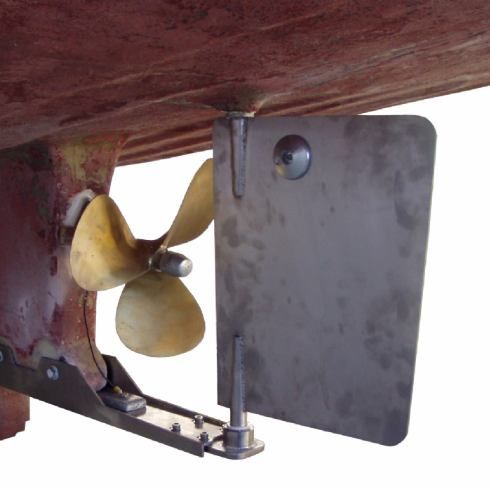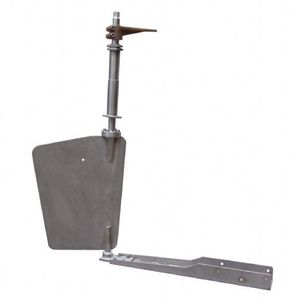
- Equipment
- Propulsion, Engine controls
- Motor boat rudder blade
- SCAM-Marine d.o.o.
Motor boat rudder blade generally



Add to favorites
Compare this product
Characteristics
- Application domain
- for motor boats
Description
Steering gear provides:
- stability of the navigation of the ship (the ability to maintain well the desired direction of sailing),
- the ability to turn (the rudders property that the ship makes smaller turning circle).
The purpose of rudder is to maintain or to change the direction of the ships navigation. It is installed in the ships stern, directly behind the propeller. When the rudder is in neutral position, the ship maintains the direction. When the rudder turns sideways, the sea water flow at the rudder changes direction, creating pressure on the rudder, which gives momentum and turns the ships bow on the same side as the rudder. Ships with two propellers have two rudders as a rule.
Dimensions of rudder blade (surface area) are calculated by multiplying the coefficients, length and draft of the ship. The coefficients take into account the type of ship, type and profile of the rudder, and rudder position.
Info
Types of rudder according to the way of attachment:
- rudder with rudder carrier bearing,
- spade rudder.
Types of rudder according to ratio of the areas in front of and behind the axle:
- unbalanced rudder (rudder area is behind the axle),
- semi-balanced rudder (10 - 15% of rudder area is in front of the axle)
- balanced rudder (20 - 25% of rudder area is in front of the axle).
Types of rudder according to the cross-section of the rudder:
- plated rudder (rudder blade is made of sheet metal, whose thickness define the cross-section),
- double plated rudder (cross-section is in the form of drops).
Catalogs
No catalogs are available for this product.
See all of SCAM-Marine d.o.o.‘s catalogsRelated Searches
- Propeller
- Power boat steering wheel
- Boat propeller
- Fixed-pitch propeller
- Propeller shaft propeller
- 4-blade propeller
- 3-blade propeller
- Coupling
- Stainless steel power boat steering wheel
- Bronze propeller
- Boat steering
- Shaft mechanical coupling
- Boat coupling
- Boat pipe
- Boat cylinder
- Flexible mechanical coupling
- Propulsion system
- Wooden power boat steering wheel
- Folding propeller
- Hydraulic steering gear system
*Prices are pre-tax. They exclude delivery charges and customs duties and do not include additional charges for installation or activation options. Prices are indicative only and may vary by country, with changes to the cost of raw materials and exchange rates.



